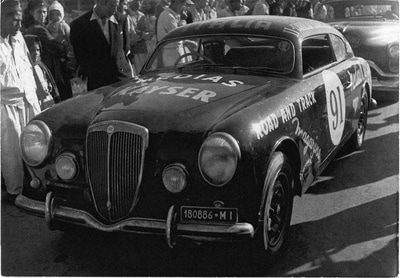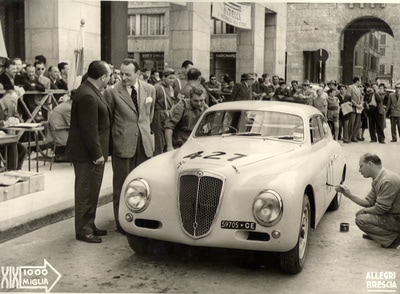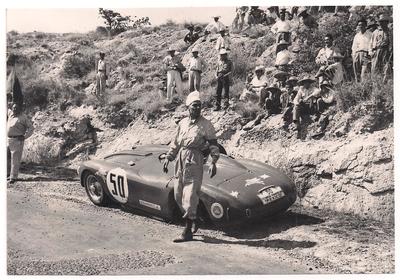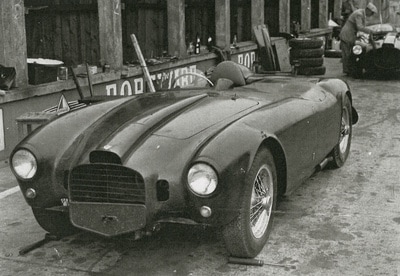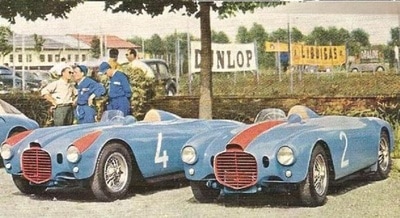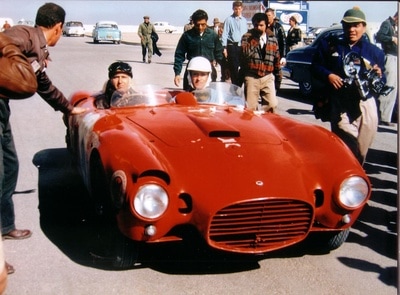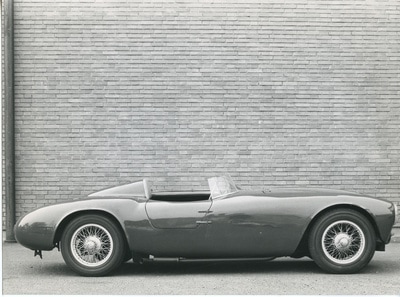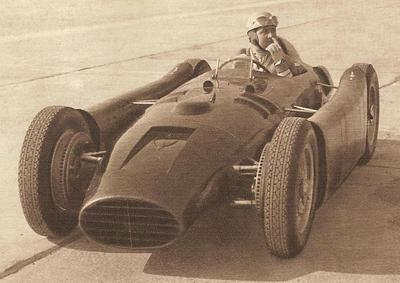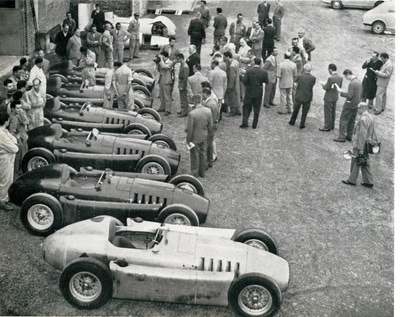Lancia Aurelia
Lancia D24s at Sebring, 1954
Other Racing
Following the Aurelia, Lancia developed an extensive racing program that grew over time. Its history is compelling, full of tremendous success and heartbreak. From 1951 to 1955 they prepared the following:
The D24 was a remarkably successful car, winning practically all the races of the time, including the Targa Florio, the Mille Miglia, the Carrera Panamerica. Had Lancia stopped at this point, and made more of these cars for sale, their future story would have been very different.
Shown above is the Lancia team at the 12 Hours of Sebring in 1954. By the 11th hour, the Lancias were over 1 hour ahead of the competition, only to be felled by failed bearings in the last hour. The race was won by an Osca with Lancia finishing second.
Attention then shifted to the radical and complex D50 Grand Prix car, which featured an angled engine mounting to get a lower driver, and side pontoons to stabilize handling as fuel was used up. While the car was quite fast, the factory simply had overreached and it was too much to develop. By 1955 factory resources were stretched thin. Sales could not support both the racing effort and the new building (a tower for all the admin and engineering staff), and the company was running out of money. The racing effort was closed down in mid-1955. The D50 cars were , however, the leading Italian effort at the time, and the cars were oddly handed over to Ferrari, who won the world championship with them in the following years.
- a B20, first mildly tuned and then with more power
- the Corsas, lightweight (all alum) special B20s, 7 made
- supercharged engines used in B20 for the 1952 Carrera Panamerica
- racing coupes, the D20, with an entirely new chassis and inboard front drum brakes, and new rear suspension,
- racing open cars, D23 and D24, which won the Carrera Panamerica in 1953
- a sports racer, D25, in 1954, run modestly
- a Grand Prix car, the D50, running from 1954-1955.
The D24 was a remarkably successful car, winning practically all the races of the time, including the Targa Florio, the Mille Miglia, the Carrera Panamerica. Had Lancia stopped at this point, and made more of these cars for sale, their future story would have been very different.
Shown above is the Lancia team at the 12 Hours of Sebring in 1954. By the 11th hour, the Lancias were over 1 hour ahead of the competition, only to be felled by failed bearings in the last hour. The race was won by an Osca with Lancia finishing second.
Attention then shifted to the radical and complex D50 Grand Prix car, which featured an angled engine mounting to get a lower driver, and side pontoons to stabilize handling as fuel was used up. While the car was quite fast, the factory simply had overreached and it was too much to develop. By 1955 factory resources were stretched thin. Sales could not support both the racing effort and the new building (a tower for all the admin and engineering staff), and the company was running out of money. The racing effort was closed down in mid-1955. The D50 cars were , however, the leading Italian effort at the time, and the cars were oddly handed over to Ferrari, who won the world championship with them in the following years.
site design and content copyright G. Goldberg, images as noted Proudly powered by Weebly
